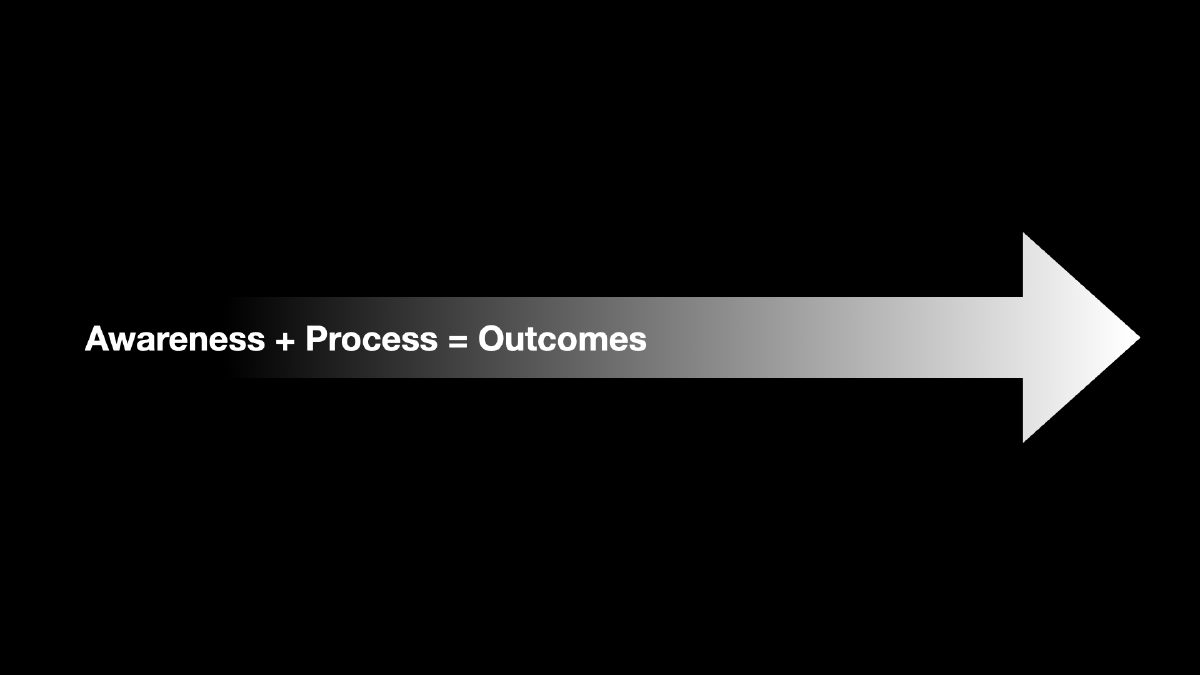The challenge of limited resources
As design leaders, we often face a fundamental challenge: how to drive meaningful organizational change with limited resources. When I first conducted UX maturity assessment, I was confronted with a matrix of improvement areas. The Nielsen Norman Group’s maturity model identified multiple dimensions across strategy, culture, process, and outcomes that needed attention.
With a small team and limited bandwidth, attempting to tackle everything simultaneously would have diluted our efforts. Instead, we needed to identify the vital areas that would create the most significant impact.
During the assessment, I asked team members to advise me and suggest three focus UX maturity areas for improvement. This provided valuable guidance for developing our initial UX area strategy.
Uncovering the unexpected catalyst
After developing and starting to execute our first UX area strategy, I began noticing significant differences in UX maturity between various teams. Some teams were improving rapidly compared to others.
My first instinct was to attribute this to the seniority and prior experiences of the UX designers. However, a different pattern emerged during one-on-ones with UX designers and peers from the product teams. Three specific areas of UX maturity, when focused on together, created a powerful catalyst effect:
- Awareness - Educating the organization about UX practices and value
- Processes - Documenting and optimizing our UX workflows
- Outcomes - Measuring and communicating the impact of our work
What made this combination so effective was how each area reinforced the others in a virtuous cycle:
- Clear processes made our work more transparent, increasing awareness
- Improved awareness led to better collaboration and stronger outcomes
- Measuring outcomes justified investment in optimizing our processes
This self-reinforcing system created momentum, pulling the organization toward greater UX maturity across all dimensions. Teams that experienced this cycle became advocates for UX within the broader organization, creating a ripple effect that accelerated adoption.
Awareness: Beyond passive understanding
Our peers and partners from product teams often compared the UX team’s approach with earlier days when design tasks were given to designers, assuming that this was enough. In those times, the reliability of results and timing had not been predictable, and the design process was poorly understood—clear signals of limited awareness of UX in the organization.
UX kick-off workshops
The situation began to change when we started to educate and communicate about design processes and methods. We implemented UX kick-off workshops for teams new to working with UX. These two-hour collaborative workshops focused on:
- Describing roles in the UX team and how responsibilities are divided on the double diamond framework
- Introducing the daily work and usual practices of the involved UX team members
- Creating an initial plan for collaboration and a broad project schedule
These workshops helped build awareness and encouraged other team members to participate in various research and design practices.
Service design training
In addition to kick-off workshops, we regularly facilitate service design training — a hands-on program where participants gain practical experience with user-centered design methods.
Communication strategy
I shifted my communication from psychology and customer needs to pragmatic business values. Profit, loss, risk, and opportunity have higher traction in business settings than customer needs, frictions, relevancy, and disappointment discussions. By expressing design work in terms of the product development value chain and measurements, I gained attention and support for action.
One significant challenge we faced was the self-image of product team members who believed they already understood products, customers, and design best practices. Initially, I was vocal about this issue until I realized I needed to pick my battles and let some learn through their own experiences. This approach was slow but effective, as some projects failed exactly as we had predicted.
Processes: Making the invisible visible
A watershed moment in our transformation came from planning and scheduling research and design tasks in project management software. As the product team started to see and relate UX tasks with outcomes, appreciation and collaboration grew.
We mapped our UX team’s value creation processes in detail. This approach helped us identify inefficiencies and create “recipes” for new design projects.
The process mapping exercise revealed opportunities to delegate and redistribute responsibilities. By identifying activities that didn’t directly contribute to customer value and determining where designers were spending time that could be better utilized, we made our processes more efficient and effective.
This transparency and predictability in our processes played a crucial role in changing how product teams perceived and valued UX work.
Outcomes: Connecting design to business impact
The final key in our transformation was connecting UX initiatives to business metrics and demonstrating the value of design work. We later expanded this approach using the VRIO framework to better demonstrate our strategic impact.
For each project, we map goals or objectives with measurable key results in three dimensions:
Customer/User Experience
- General sentiment and product-specific feedback through NPS
- Detailed insights from interviews and testing
Technical/Analytical Measurements
- Task and event-specific durations
- Bounce rates and number of attempts
Business Goals
- Change ratios for agreements and product usage
- Direct financial impact
This multi-dimensional approach ensures we capture the full impact of UX improvements while speaking the language of various stakeholders. Combining these measurements on the extended customer journey (lifecycle) became our tool for prioritizing actions and communicating design value.
UX team members reflected that connecting their work with measurements to exemplify and communicate UX’s value in the product development chain was professionally rewarding and helped communicate their impact to higher management.
The catalyst effect in action
One of my favorite examples demonstrating the power of these three areas working together was a significant project to launch a new product for the entire region—a product with few global examples to learn from. The project had challenging timelines and ambitious KPIs.
Initial challenges
The team had previously worked with UX professionals on a surface level for designs. When I learned about the project, I began advocating for full UX support allocation, but I was met with numerous control questions from superiors and peers.
My manager supported me and advised: “Keep your message and repeatedly explain in your peers’ language how UX will support the team to deliver a successful product.” I had to repeat this message many times while already taking action to onboard team members to the project.
Implementation strategy
I immediately assigned a lead user researcher who began working on extensive pan-Baltic research. Following principles similar to game theory, we strategically allocated our resources. The researcher facilitated a project kick-off workshop and communicated the research project plan to the team and stakeholders.
With the first research results communicated, we began onboarding designers to the project. As they drafted, communicated, and worked according to the project schedule, appreciation, and collaboration continued to grow.
The turning point
Meaningful outcomes began appearing before the official product release. During usability testing phases, project team members observed, either live or through recordings, how their assumptions about customer perceptions and needs were different from reality. They witnessed how customer reactions improved with iterations—a “light in the tunnel” moment for everyone involved.
Our approach was validated when the first results, anonymous comments, and positive feedback from team members’ relatives reached the product team after the official release. This project became an inspiration and guide for the entire organization.
The evolution of UX perception
Over time, we’ve witnessed a significant evolution in how UX is perceived and valued in our organization:
- Initially, we needed to ensure that the UX team would be accepted and deliver more than UI design.
- The situation shifted to a “fight over UX resources” phase, where we didn’t have enough people, and each project team wanted its dedicated UX support.
After changing our prioritization principles and streamlined processes, UX work and involvement gained a new level of meaning. Product teams now know when to plan for UX involvement and in what form.

These changes came in phases, roughly following Nielsen Norman Group’s 6 levels of UX maturity 1. The progression wasn’t immediate—recognizing meaningful changes took years. A telling indicator was hearing a top manager repeat a message that closely resembled language I had used for years. That’s when I knew the change had reached a new level.
Moving forward
We are updating the design vision and strategy as a unifying story for the design community. We continue to develop our measurement systems as a key component to sustain our customer-centric design practices and showcase the difference we can make.
Although the example of these three areas may be unique to our organization, the principle remains universally relevant: without meaningful work with outcomes, the existence of a team or function becomes questionable. This is where business value creation becomes inseparable from design excellence.
By strategically focusing on awareness, processes, and outcomes, we created a foundation to drive UX maturity across our organization, transforming how design is perceived, practiced, and valued.
On your UX maturity journey, identify the areas that could create a catalyst effect in your team and organization. While our areas might not be the exact formula for your context, finding self-reinforcing elements that create momentum can help you make remarkable progress even with limited resources.
The insight from our experience is that UX maturity advancement doesn’t need to be linear or extensive to be effective. Focusing on few UX maturity areas can create an unexpected catalyst that transforms how your organization approaches design.
Kara Pernice, Sarah Gibbons, Kate Moran, and Kathryn Whitenton, “The 6 levels of UX Maturity,” Nielsen Norman Group, January 24, 2024, https://www.nngroup.com/articles/ux-maturity-model/ ↩︎

